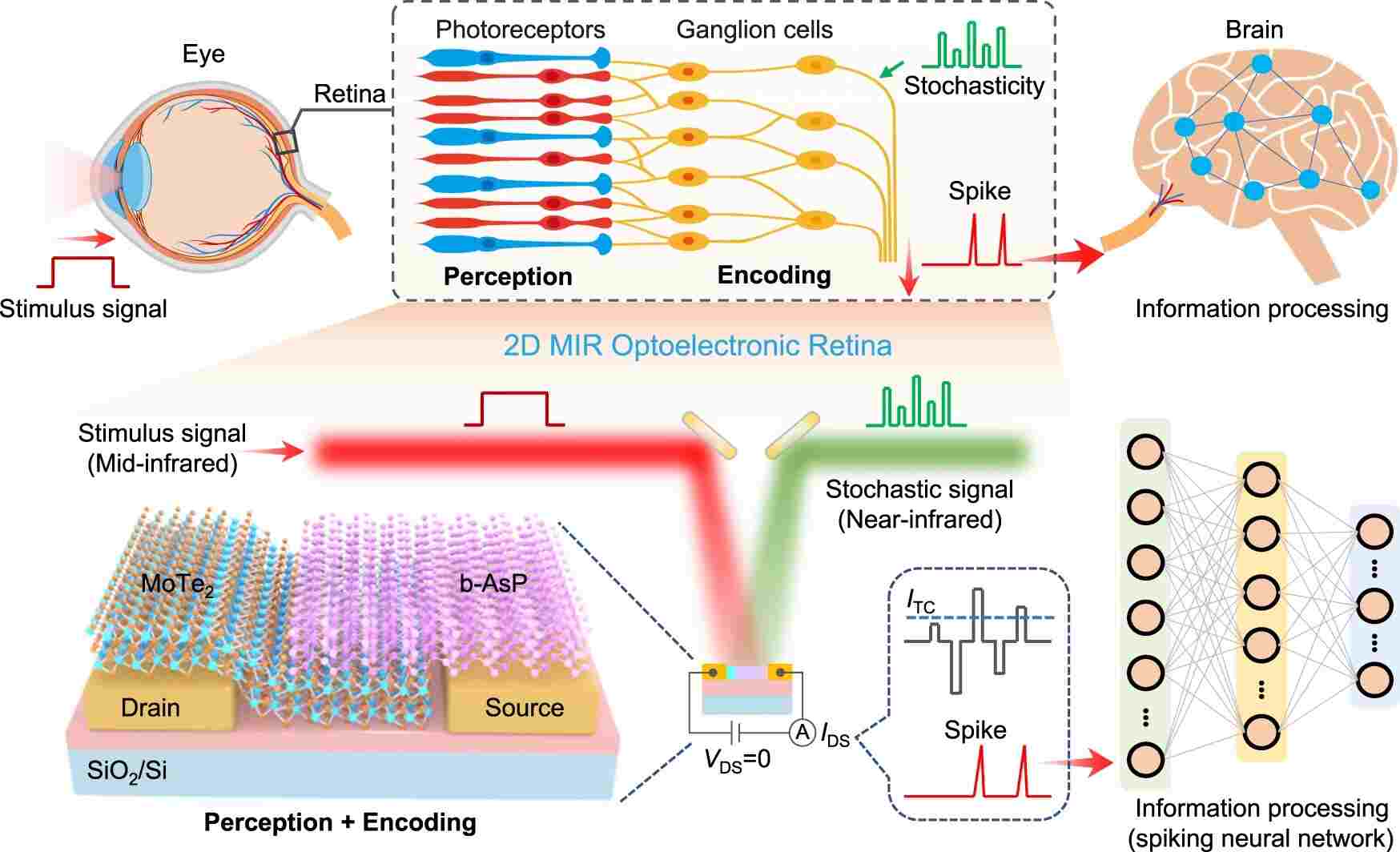A collaborative research effort between Singapore and China has yielded a groundbreaking development: an artificial retina device capable of perceiving and encoding mid-infrared radiation. Inspired by the intricate structure of the human retina, this innovation holds tremendous potential for diverse applications, including medical diagnosis, autonomous driving, and advanced night vision systems.
The artificial retina is constructed as a compact two-dimensional (2D) Heterostructure composed of Boron Arsenide (b-AsP) and molybdenum Diselenide (MoTe2). The b-AsP layer functions as an absorber, selectively capturing mid-infrared radiation, while the MoTe2 layer generates corresponding electrical signals. These electrical signals are then effectively encoded into a series of spikes, facilitating subsequent decoding by a neural network to form a coherent image.

Compared to conventional mid-infrared sensors, the artificial retina offers several advantages. Notably, its compact size and heightened efficiency make it an ideal solution for applications with stringent space and power constraints. Moreover, its ability to detect objects beyond the range of human perception renders it invaluable in a multitude of scenarios. Additionally, the device exhibits adaptability to fluctuations in light intensity, an indispensable attribute for applications such as autonomous driving.
The successful development of the artificial retina represents a significant leap forward in imaging technologies. Its potential to revolutionize various industries, including medical diagnosis, security, and manufacturing, is truly remarkable.
Artificial Retina: Applications
- Medical Diagnosis: By detecting mid-infrared radiation, the artificial retina can aid in the identification of diseases emitting such radiation, such as cancer and heart disease.
- Autonomous Driving: The heightened perception of the artificial retina enables autonomous vehicles to detect pedestrians, cyclists, and other objects that elude human vision, significantly enhancing safety.
- Advanced Night Vision: The artificial retina's capabilities offer the potential for night vision devices that surpass current models in both efficiency and effectiveness.
- Military Defense: The artificial retina's aptitude for detecting and tracking mid-infrared radiation-emitting targets, such as missiles and drones, holds significant implications for military defense applications.
While still in the nascent stages of development, the artificial retina possesses immense potential to reshape a broad range of industries. Further research and development endeavors will undoubtedly transform this device into a pivotal tool for numerous applications.
The artificial retina stands as a promising new technology with the potential to significantly enhance the lives of millions. Through continued research and development, this device can evolve into an invaluable tool across a wide array of applications. Its potential impact spans multiple industries, including medical diagnosis, security, and manufacturing.
Comments
All Comments (0)
Join the conversation